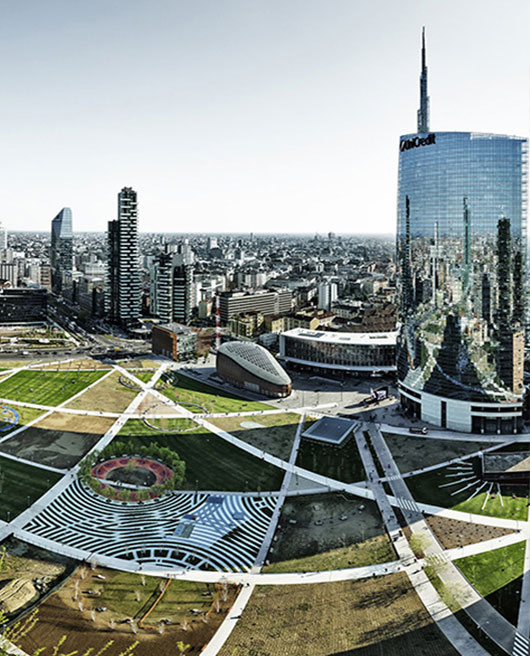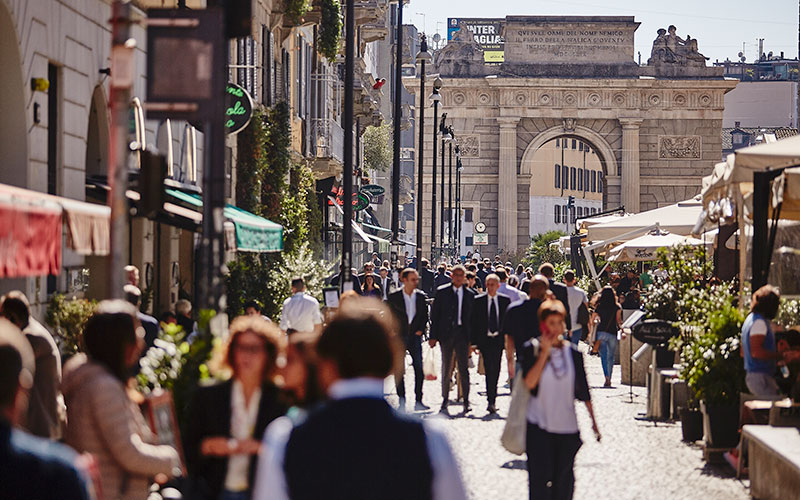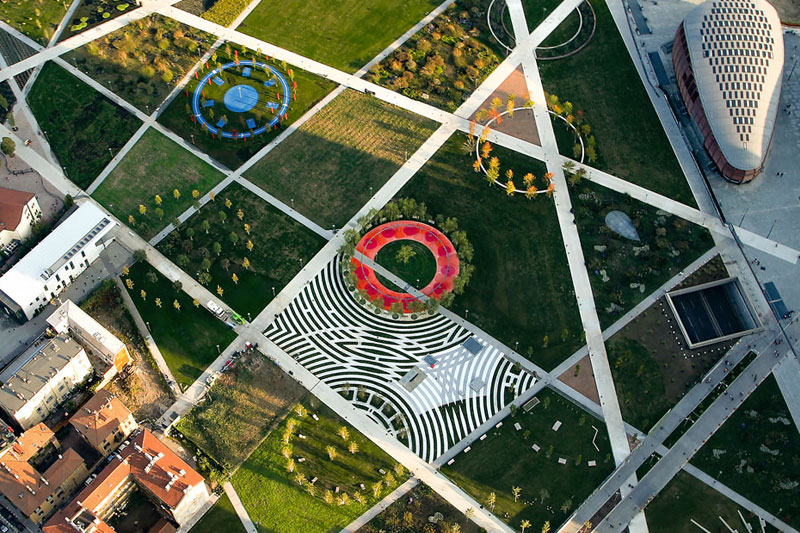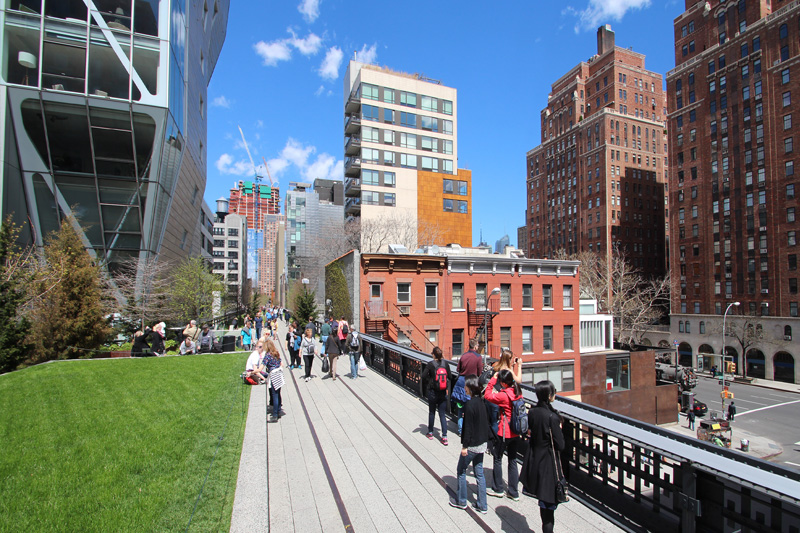
There’s a district in the heart of Milan that is changing the rules of architecture, refocusing people's attention on the city centre and offering a more sympathetic and human way of experimenting with spaces.
This is the ground-breaking Porta Nuova project, a major urban and architectural redevelopment project which, in addition to breathing new life into this Milanese historic district, represents a break with the past and traditional values and visions.
The home of many national and international firms that have chosen to locate their headquarters here, Porta Nuova is promoting itself as a centre of innovation and cultural exchange.
But that's just part of the district's identity: the area is designed and created to provide value not only to those working there but also those living there, turning the idea that architecture sometimes locates buildings in a privileged position in relation to people and their most deep-seated needs on its head.
In Porta Nuova the value and magic of innovation also comes from the open space. At first sight, paradoxically, these free, open spaces waiting to be developed will become places to ‘live in’ as much as the buildings, houses and offices, extending the boundaries and multiplying the possibilities for making use of that space.
This is what Manfredi Catella, Founder & CEO of COIMA had to say:
The exceptional nature of cities comes from the quality of their empty spaces. A city isn't only beautiful because of its buildings; its piazzas and streets also create public areas that give you a sense of well-being.
That's how, in a Milan with districts that already appear to be structured and have their own identity, the Porta Nuova area has come to the fore with the goal of reconnecting with the rest of the city, simplifying its lines and staying focused on the need to help people to experience outdoor spaces once again..

It is a total cultural shift: this space was also designed for passing through and should be experienced at a gentle walking pace. A continuous pedestrian system criss-crosses through green areas, piazzas and walkways, while cars become “invisible”, directed through a tunnel that does not interfere with more sustainable and “human” mobility. The appearance of the buildings also changes, and they no longer look like the grey mountains rising up from the streets found in some places, obstructing light and the horizon. Walking in Porta Nuova, your eyes encounter buildings where the majesty of concrete is replaced with the natural look of wood and the brightness of glass, which reflects the blue of the sky and gives a feeling of airiness, space and lightness.
One of the symbols of this new take on architecture and the interplay between spaces and people is Piazza Gae Aulenti.
It was described as one of the most beautiful piazzas in the world, including in terms of innovation and environmental sustainability, and its fame was confirmed when it was awarded the prestigious Landscape Prize. But what makes it truly unique is its potential as a place for social gatherings.
To understand this, simply stop and take a look around. A long bench sculpture to linger on, the gentle and relaxing sounds of the water that muffle the distant rumble of traffic, Alberto Garutti's sculpture which, with its chrome-plated brass pipes, plunges passers-by into a beautiful, harmonious landscape which they cannot fail to be moved by.











